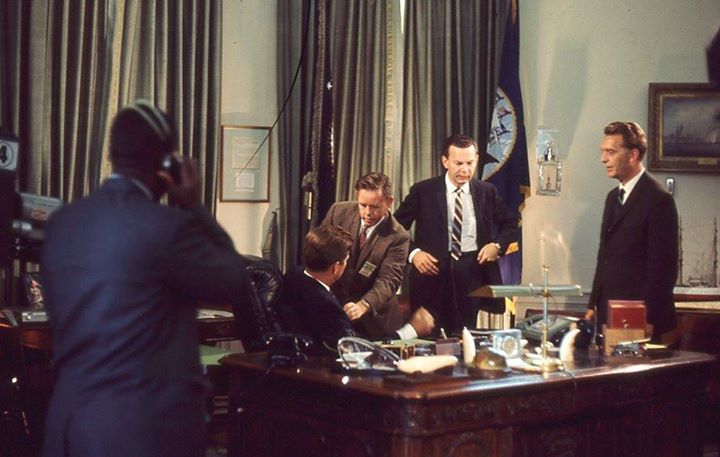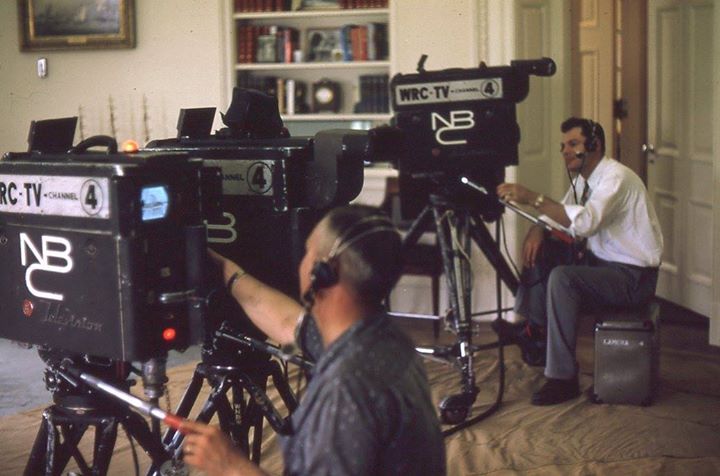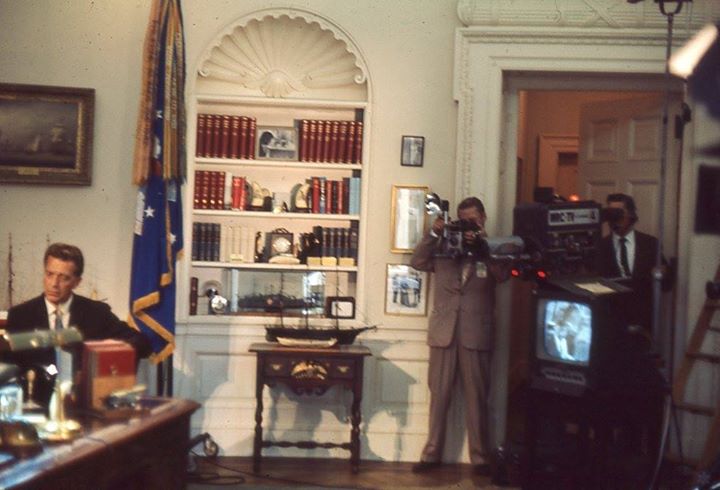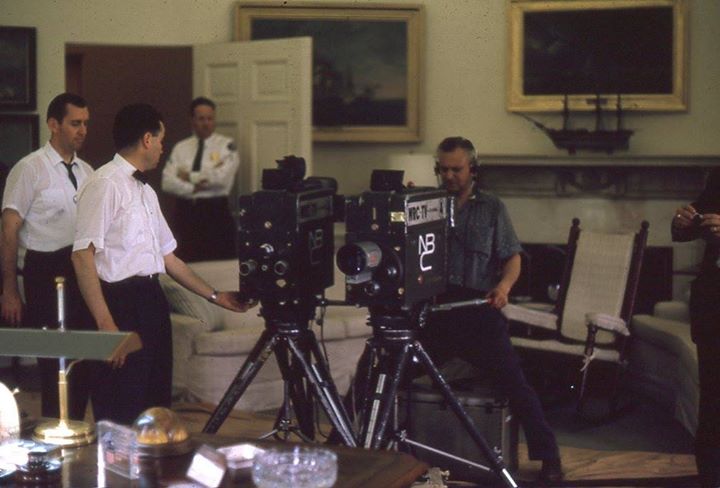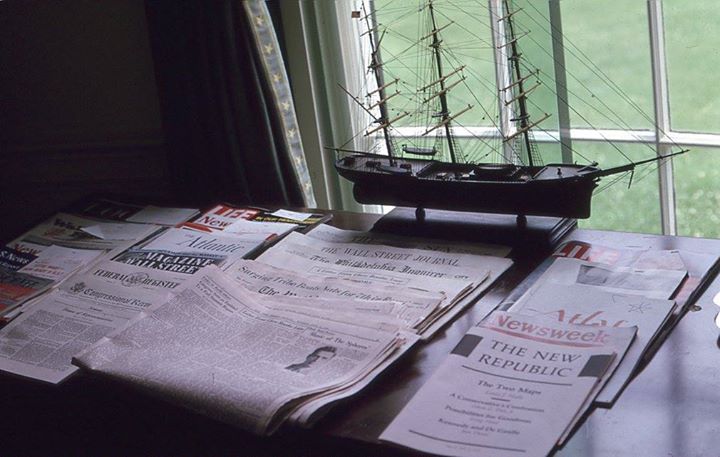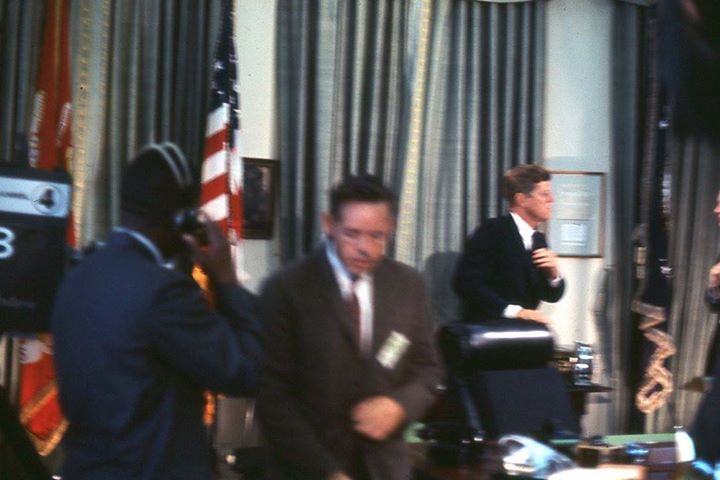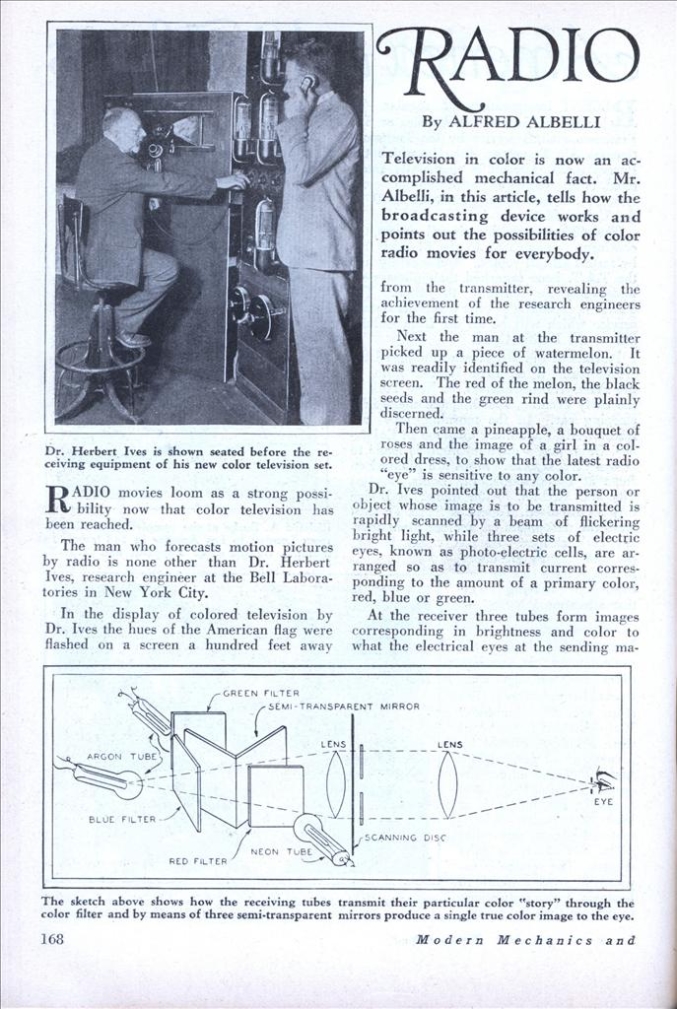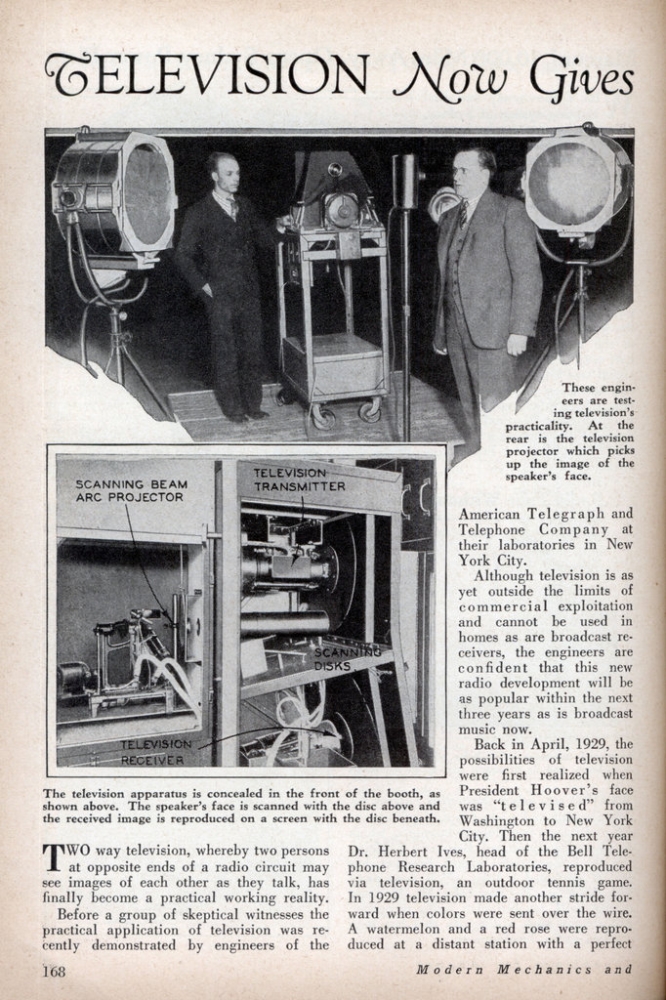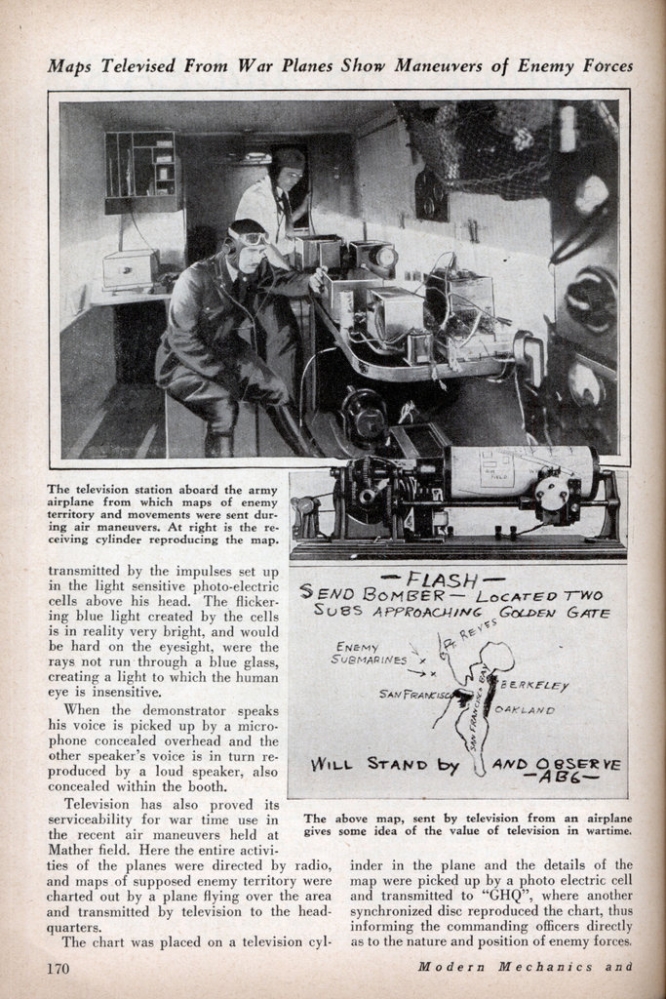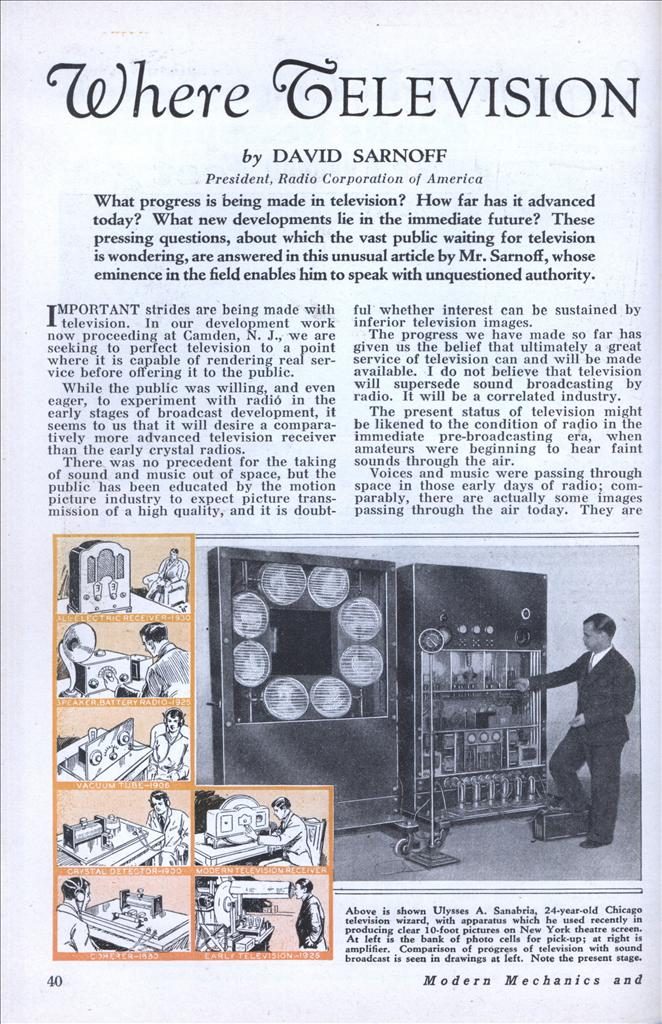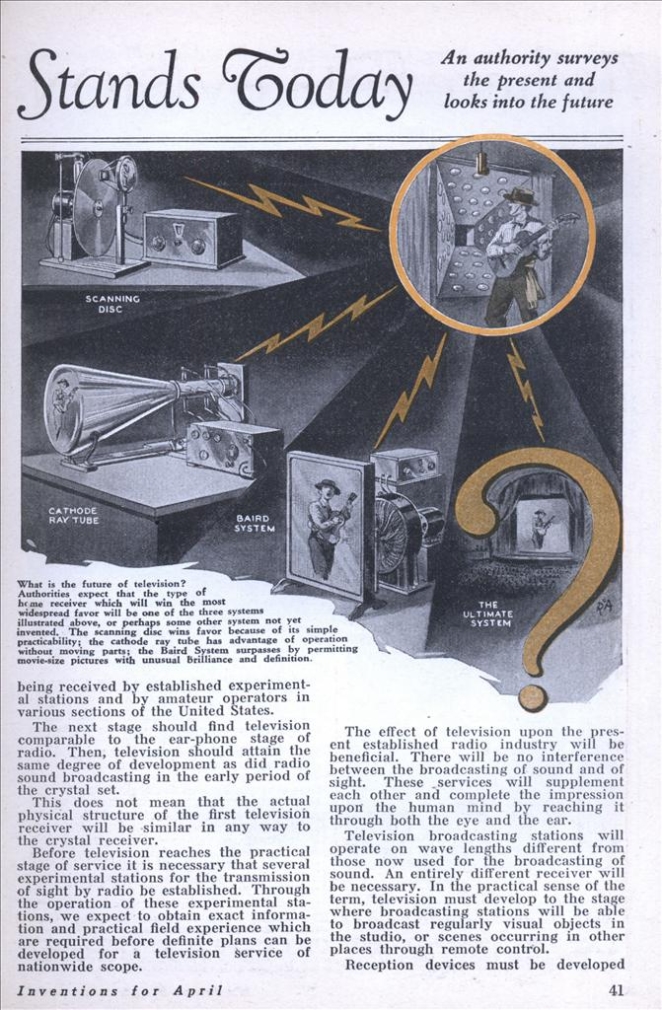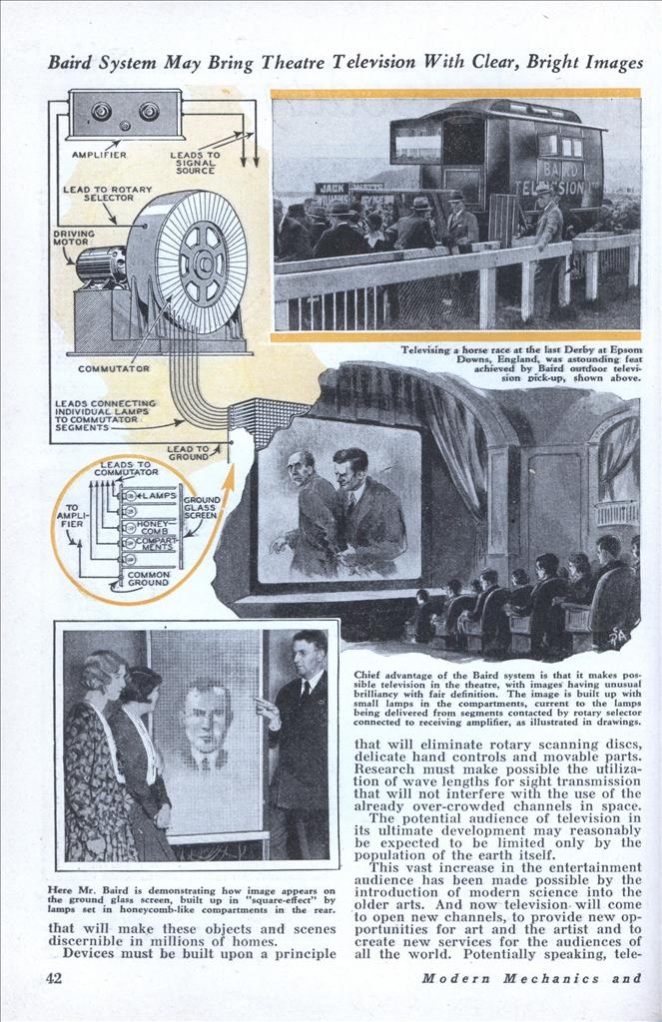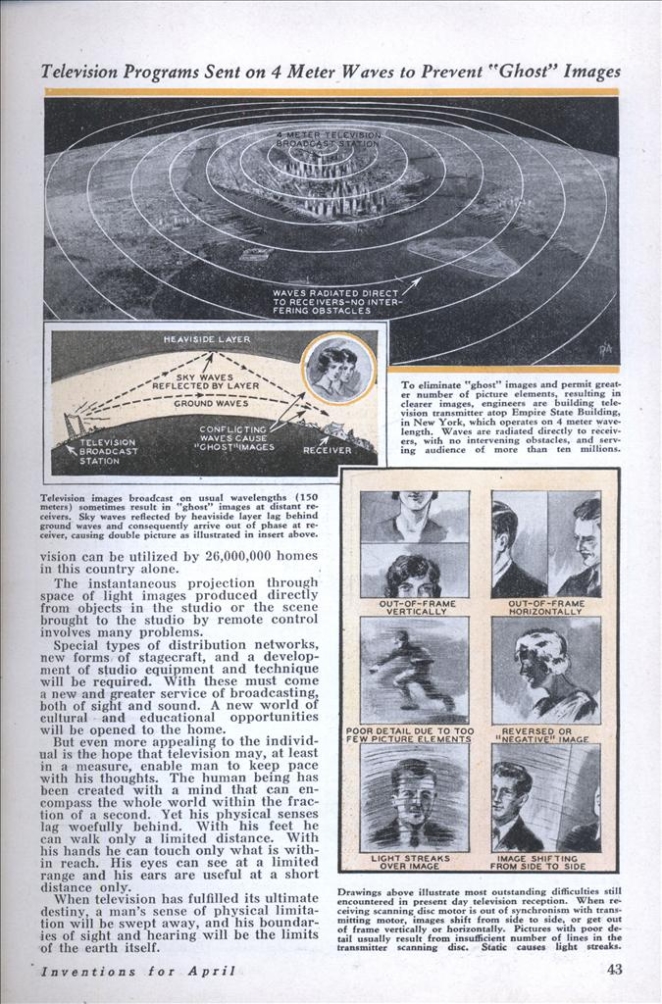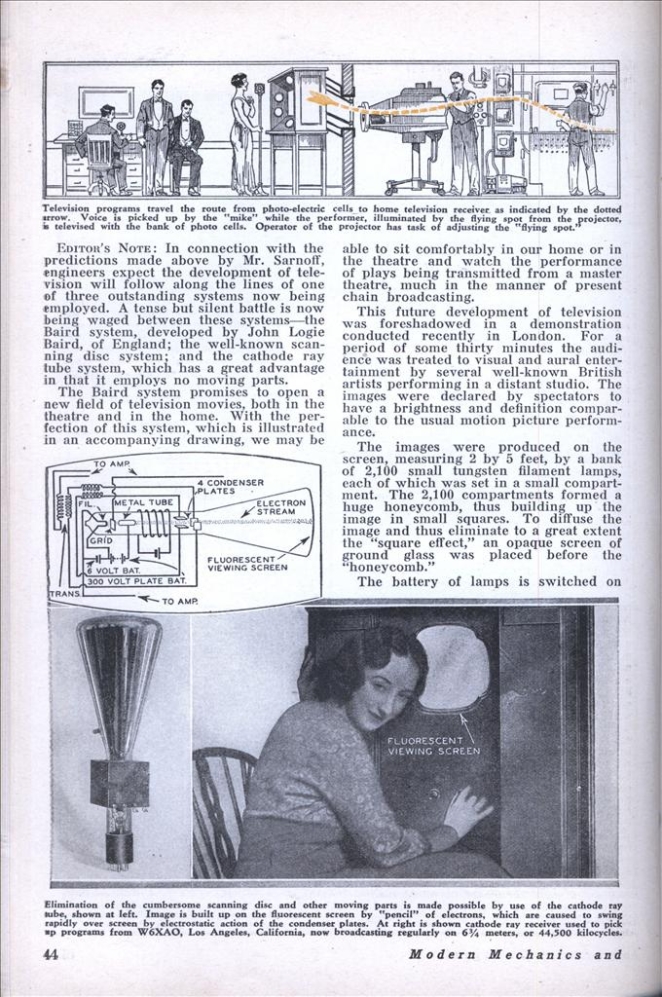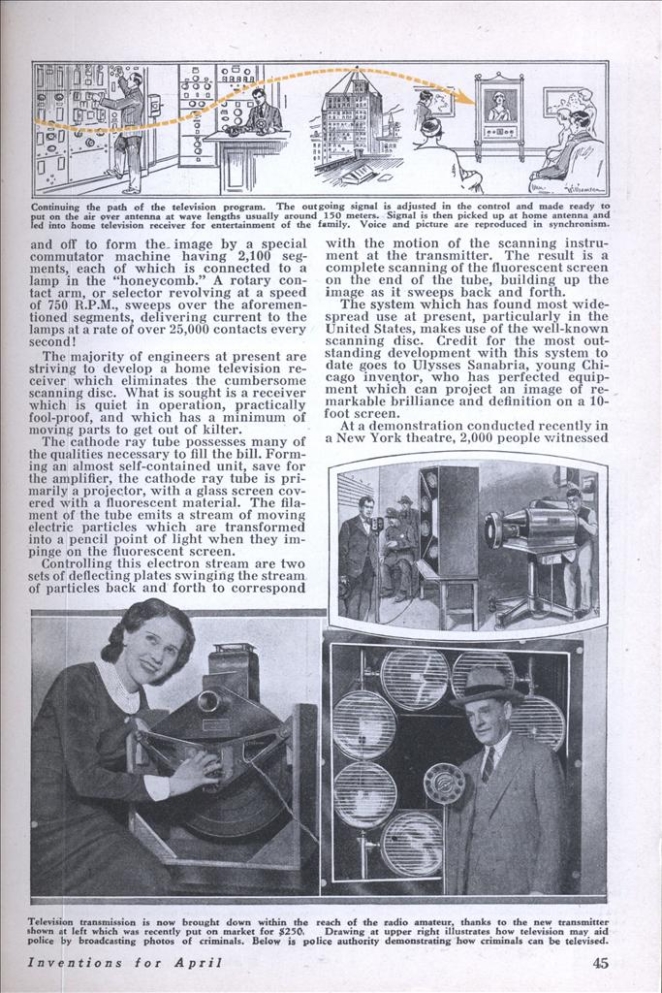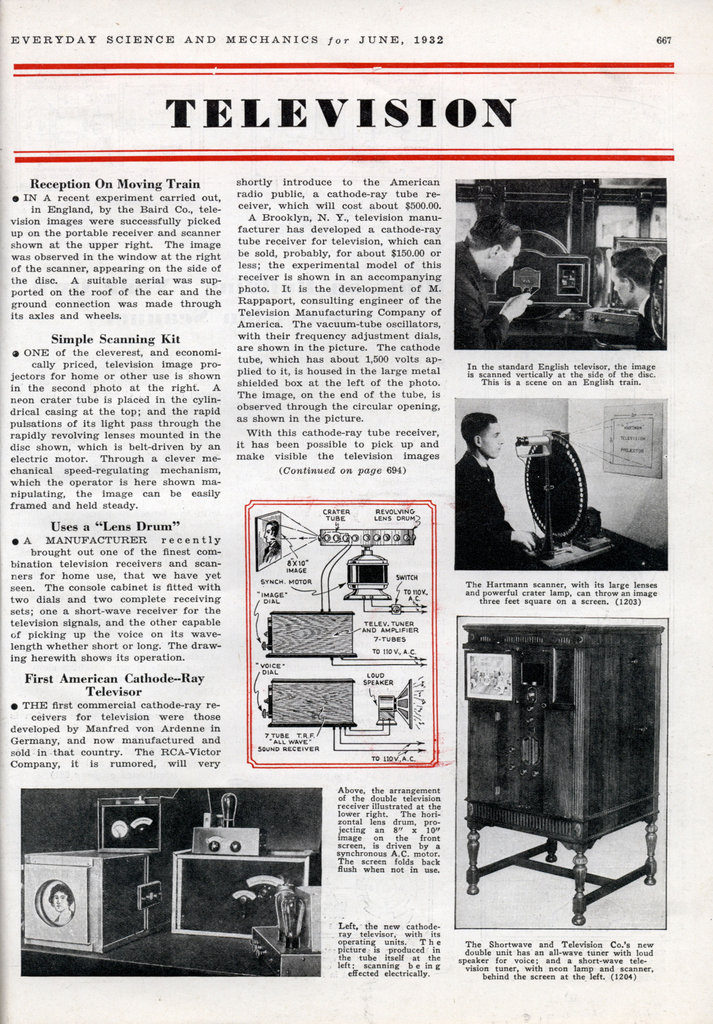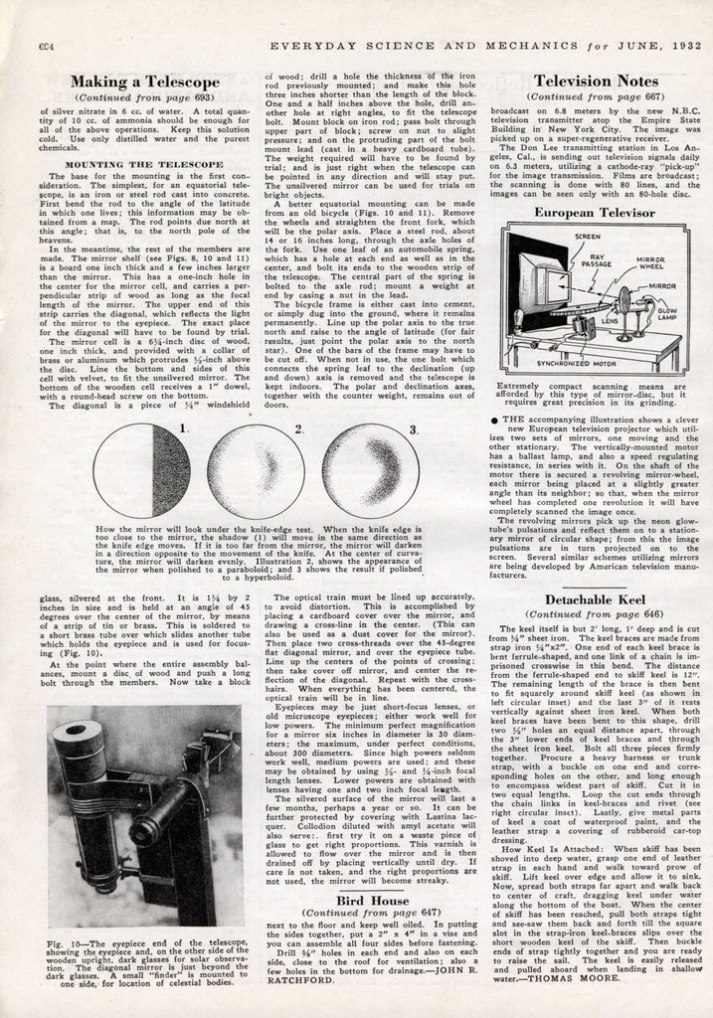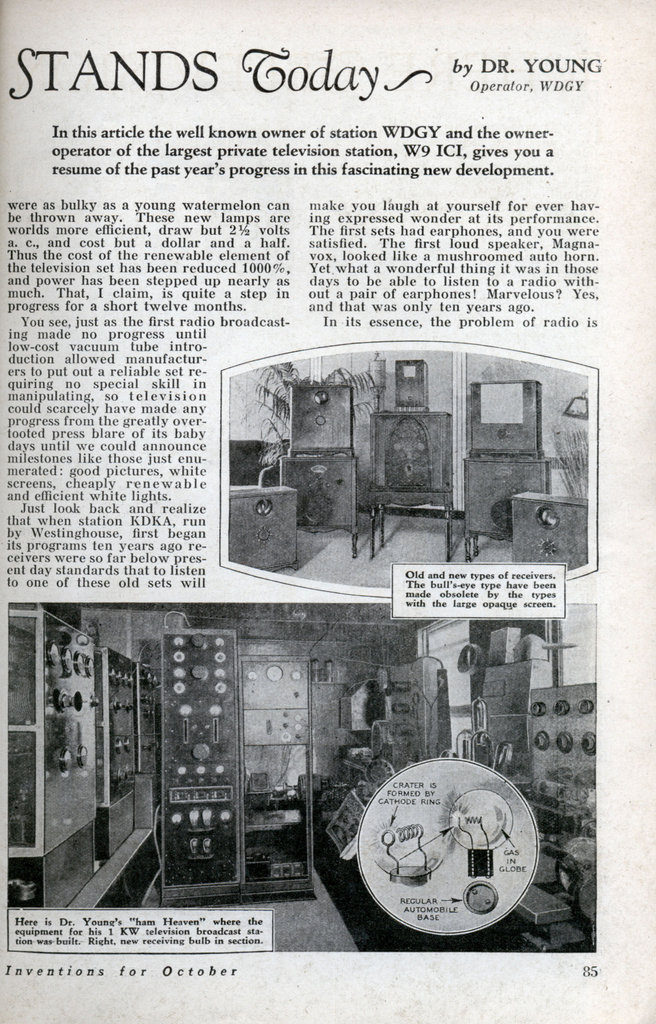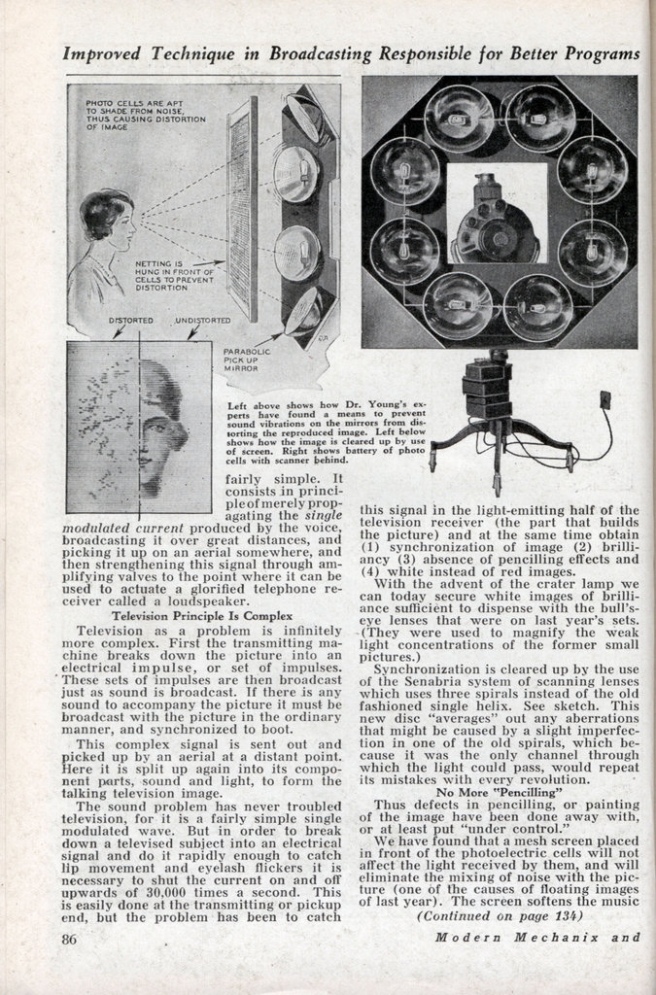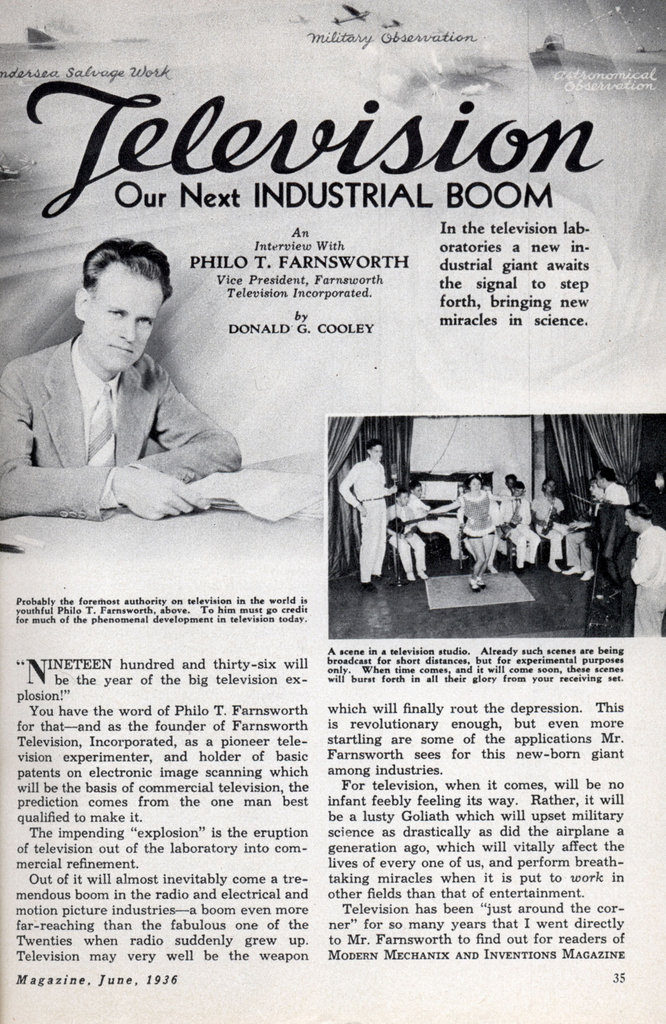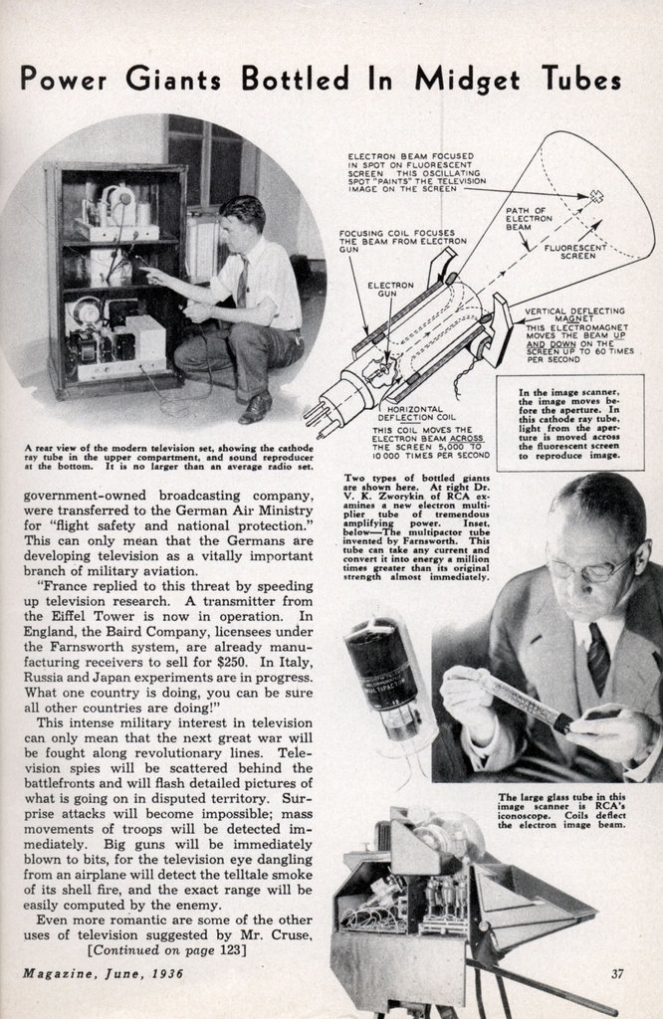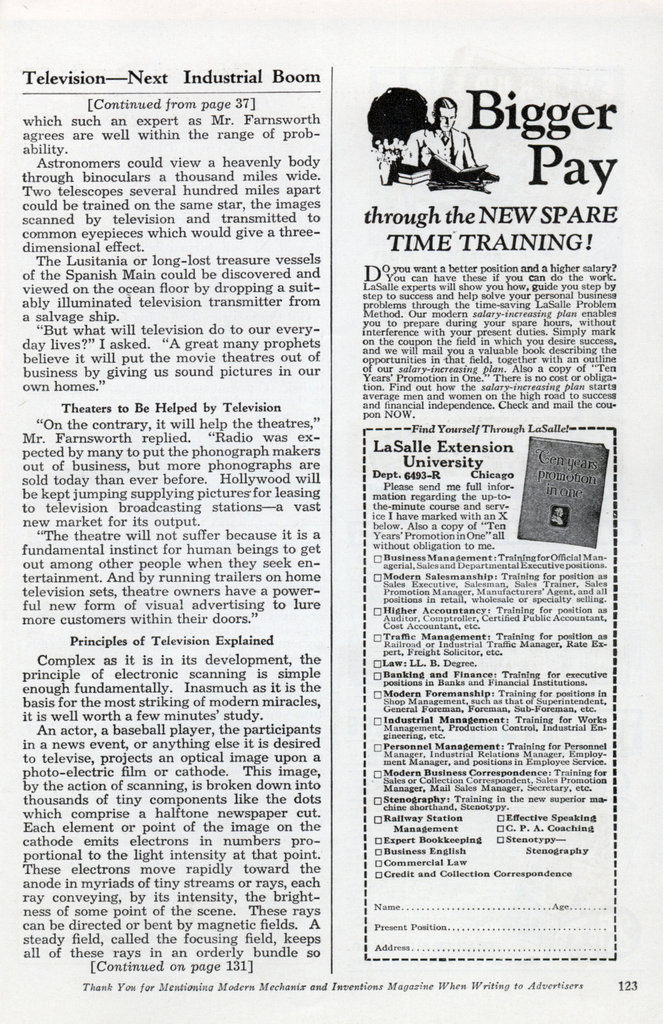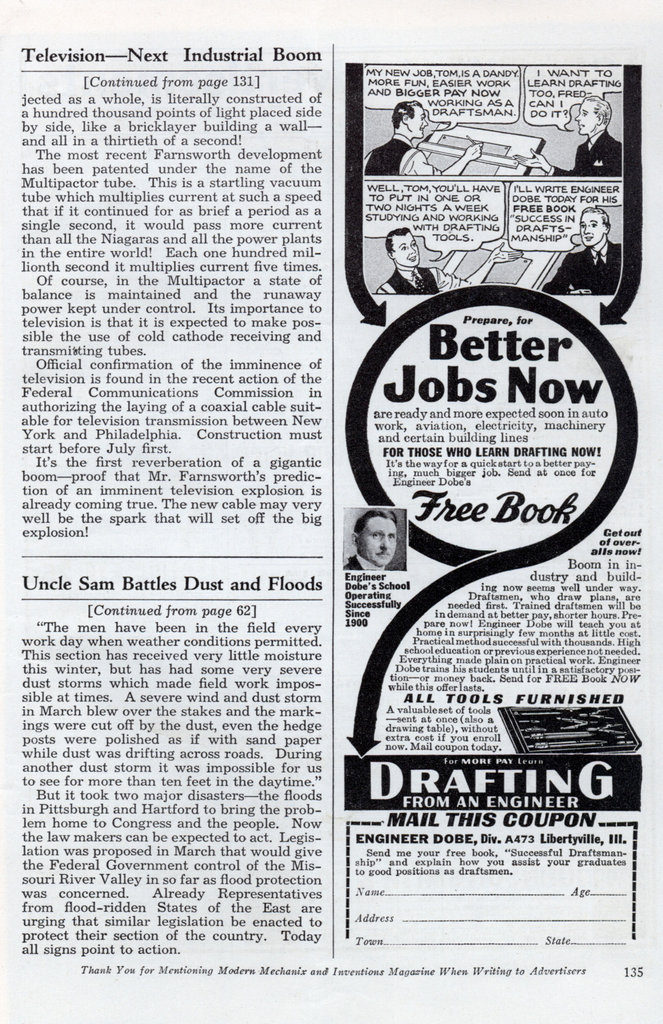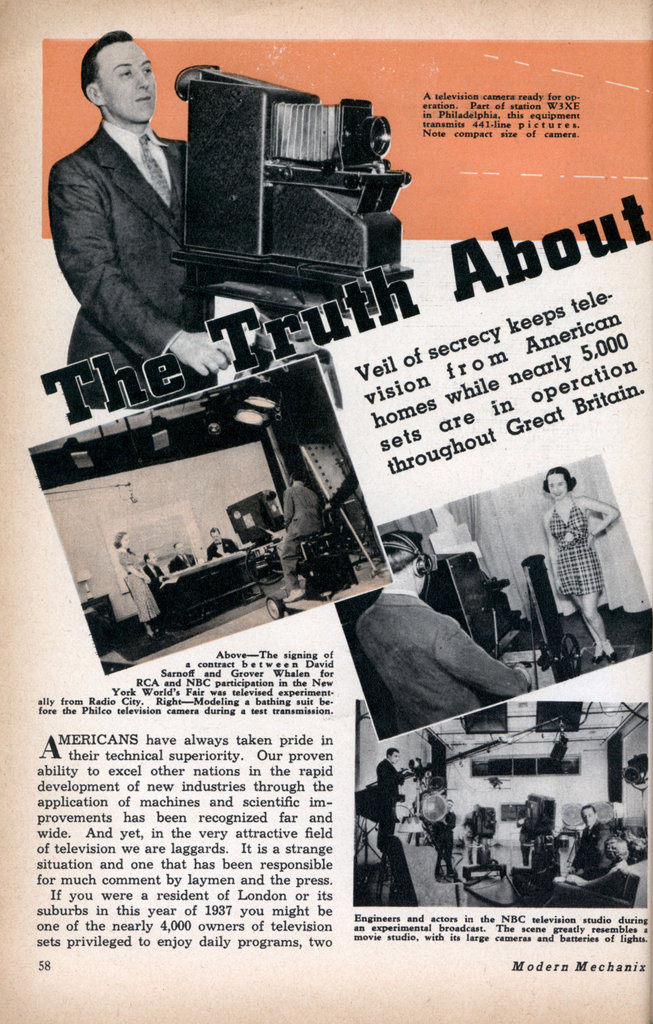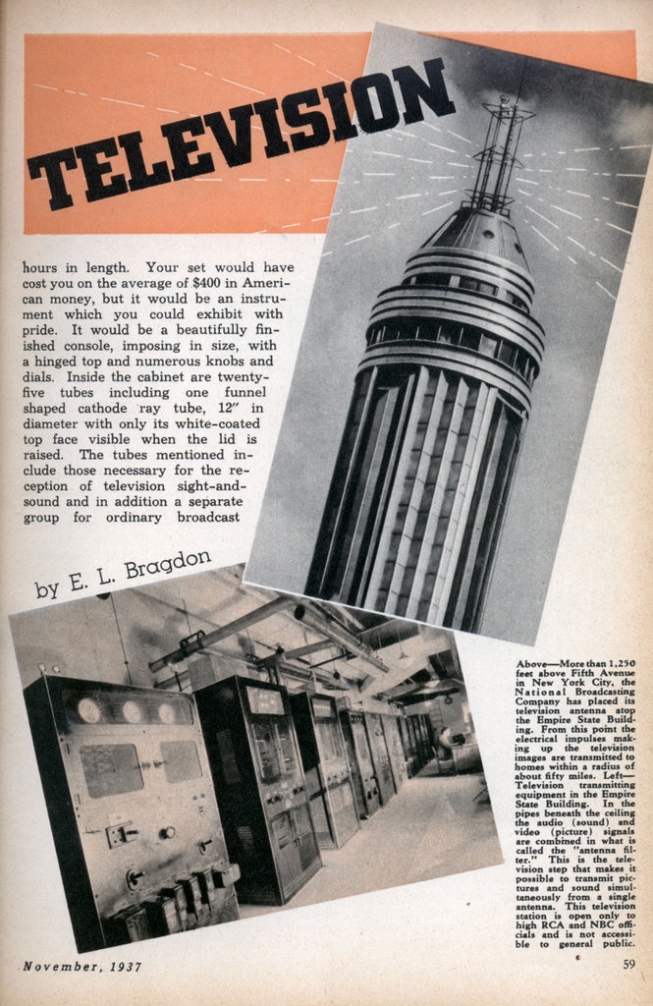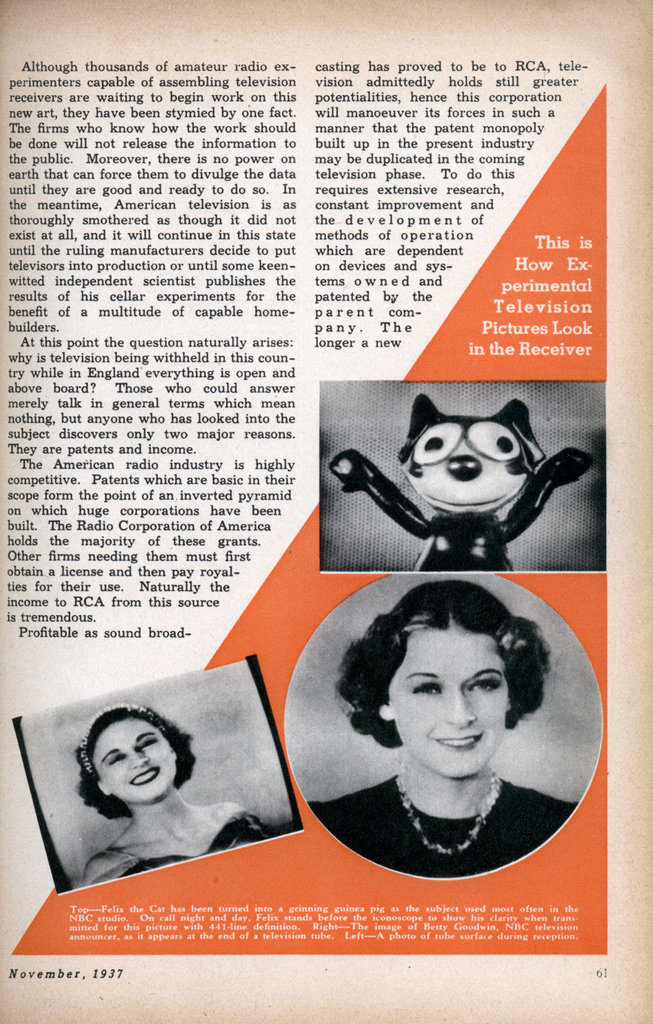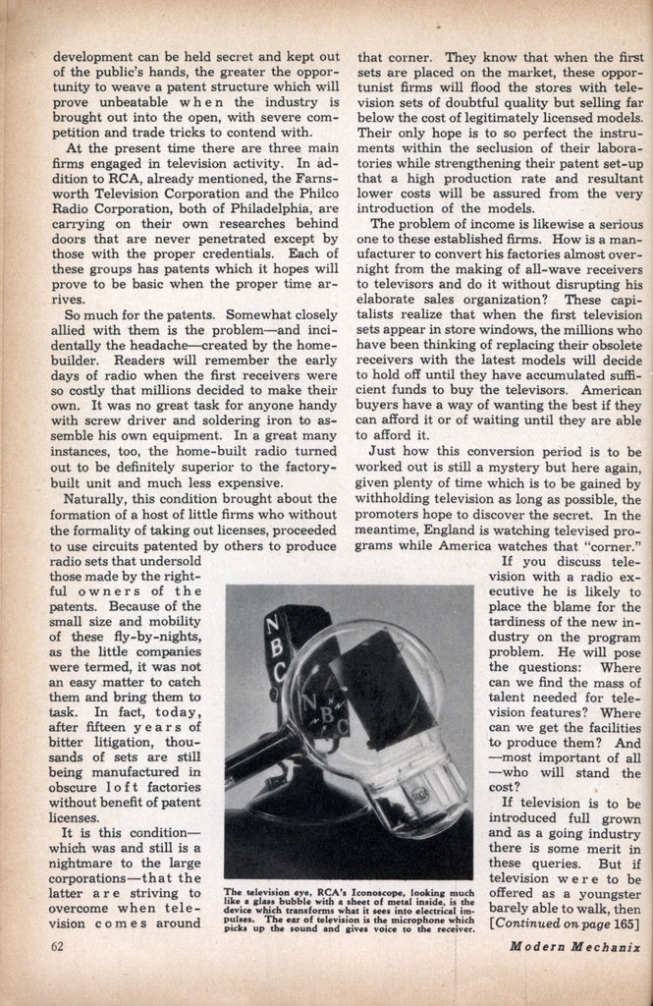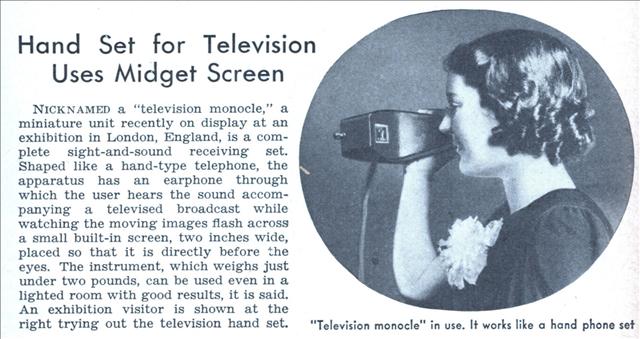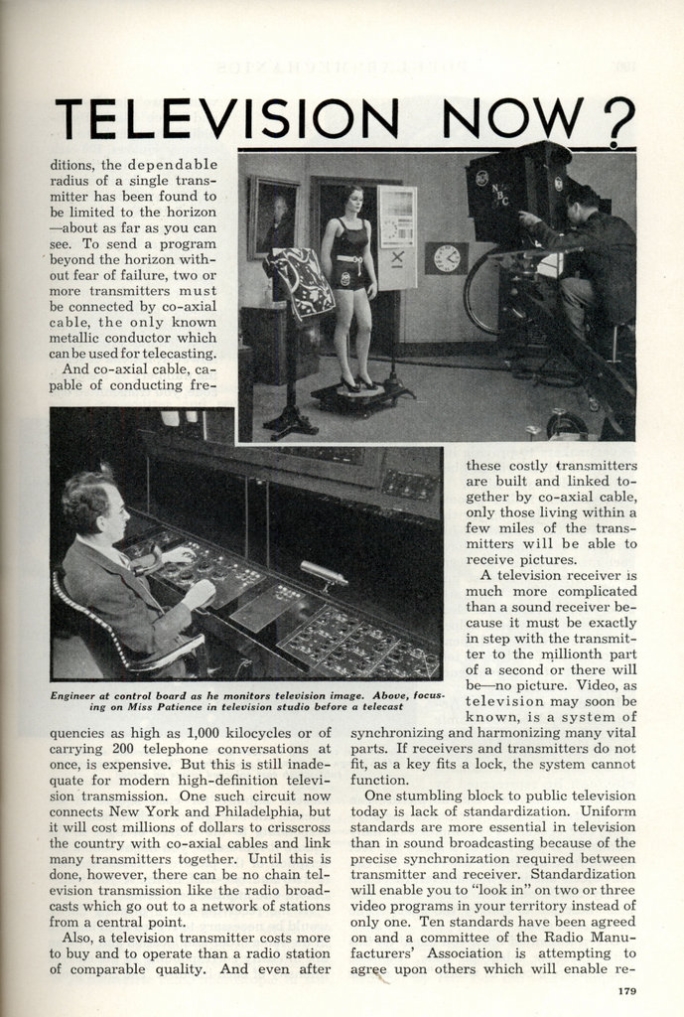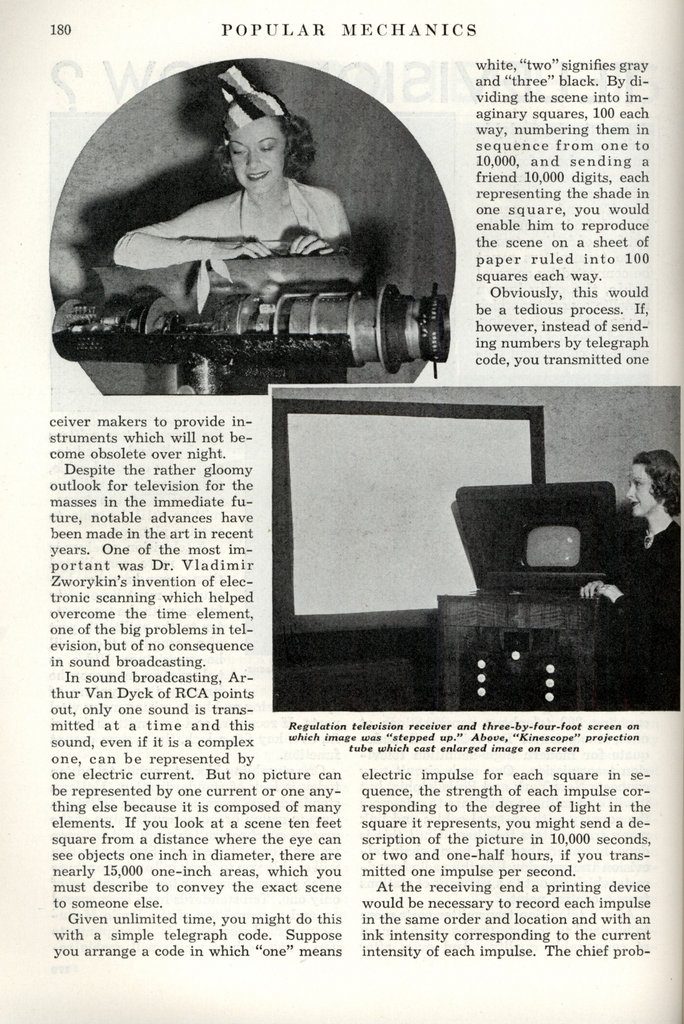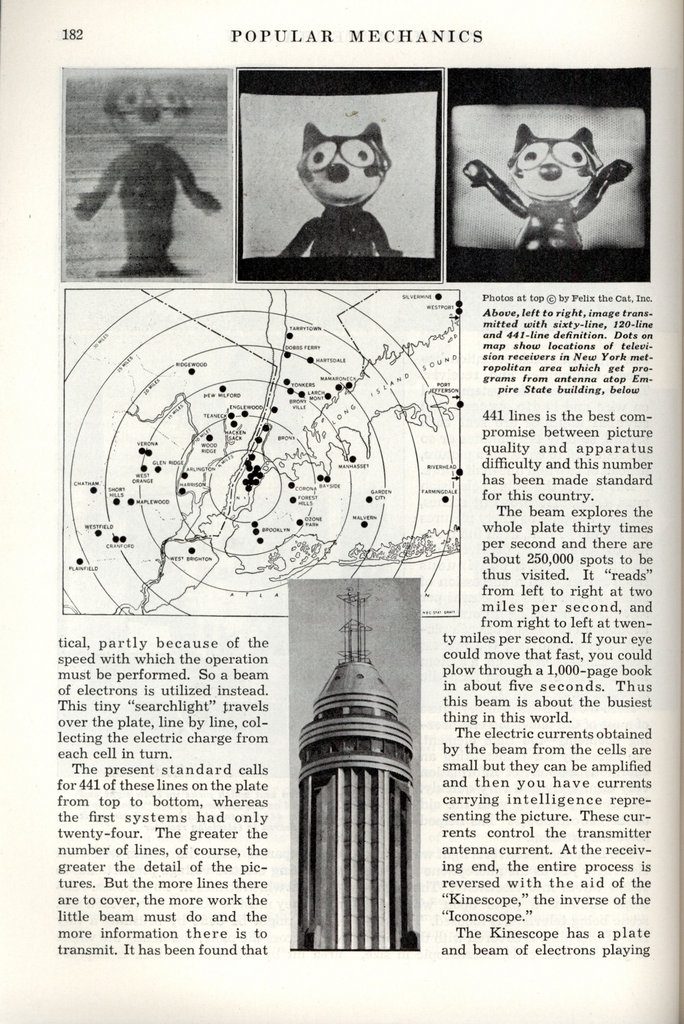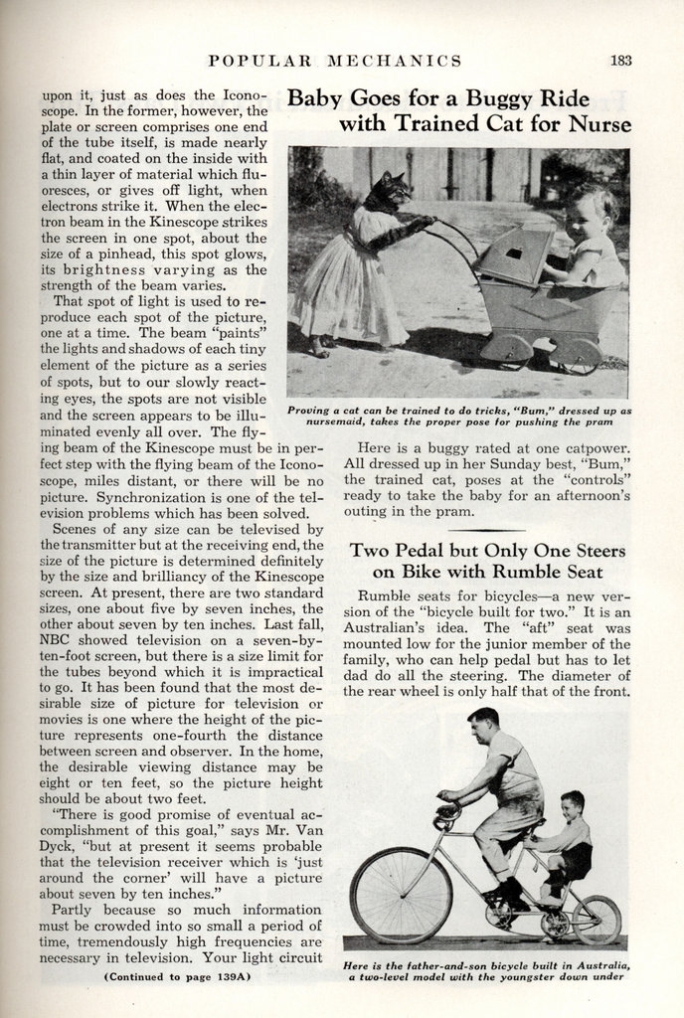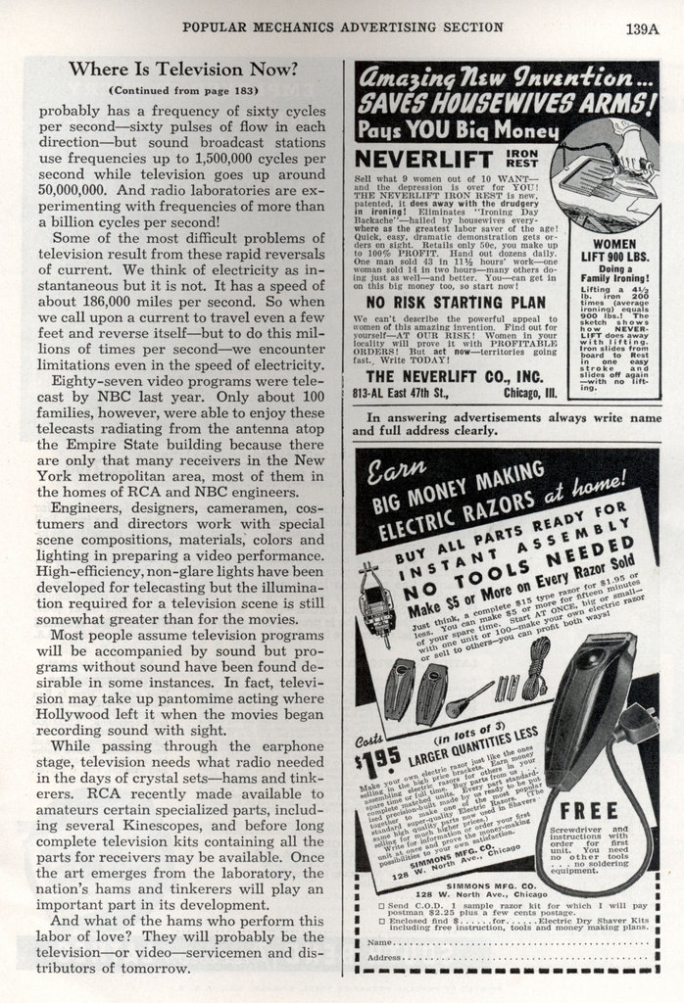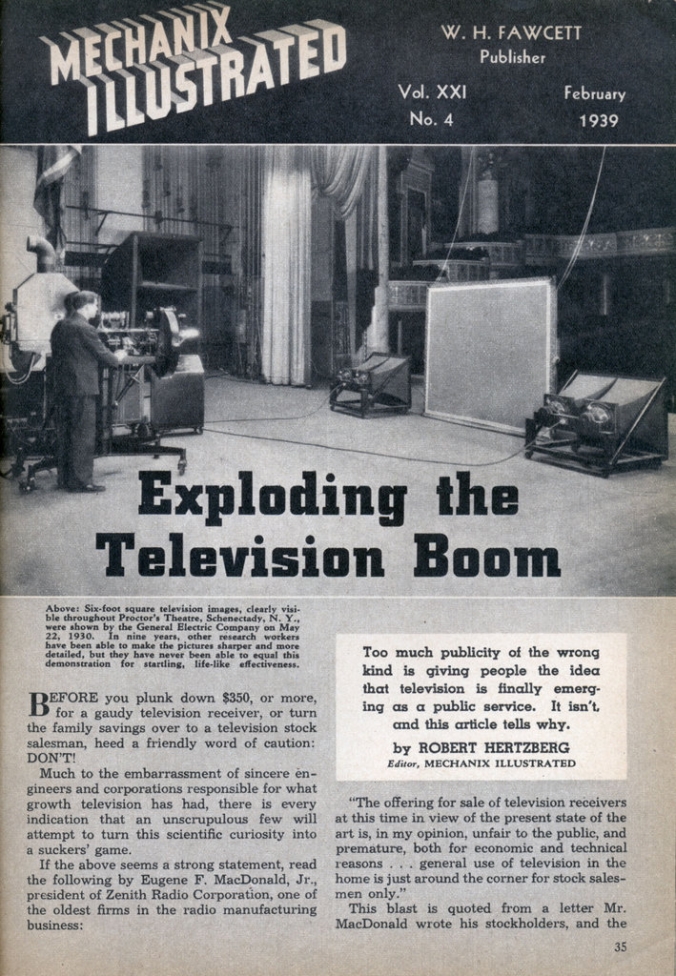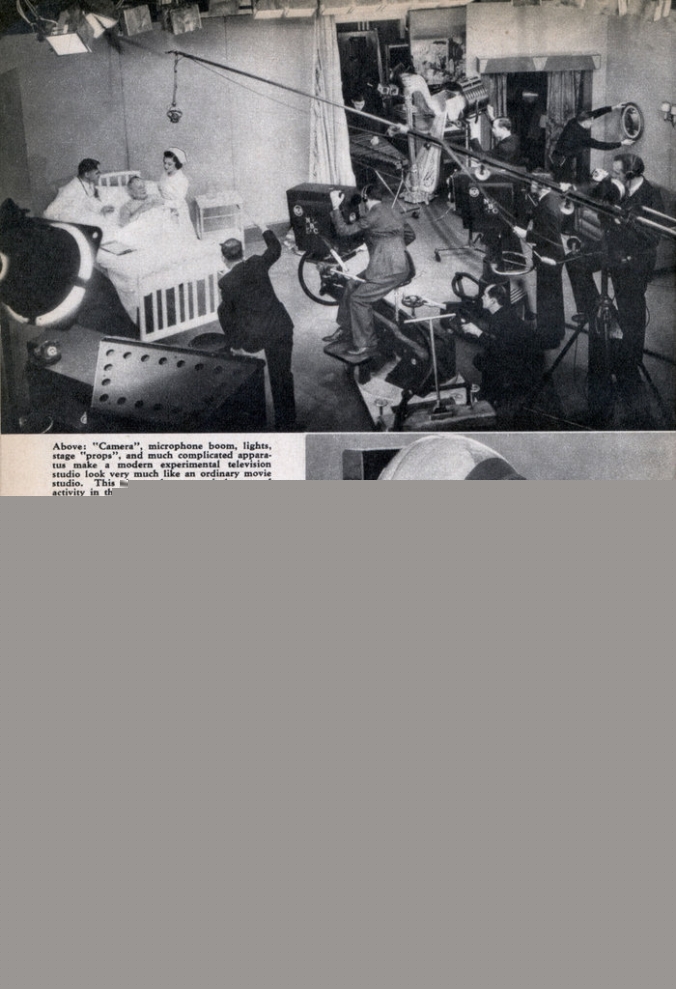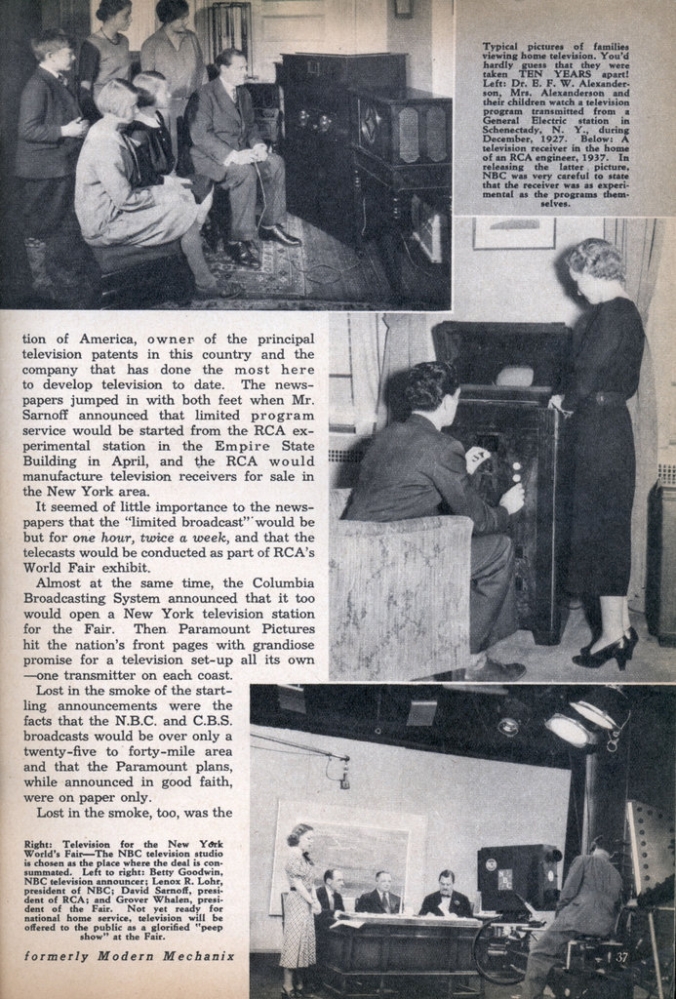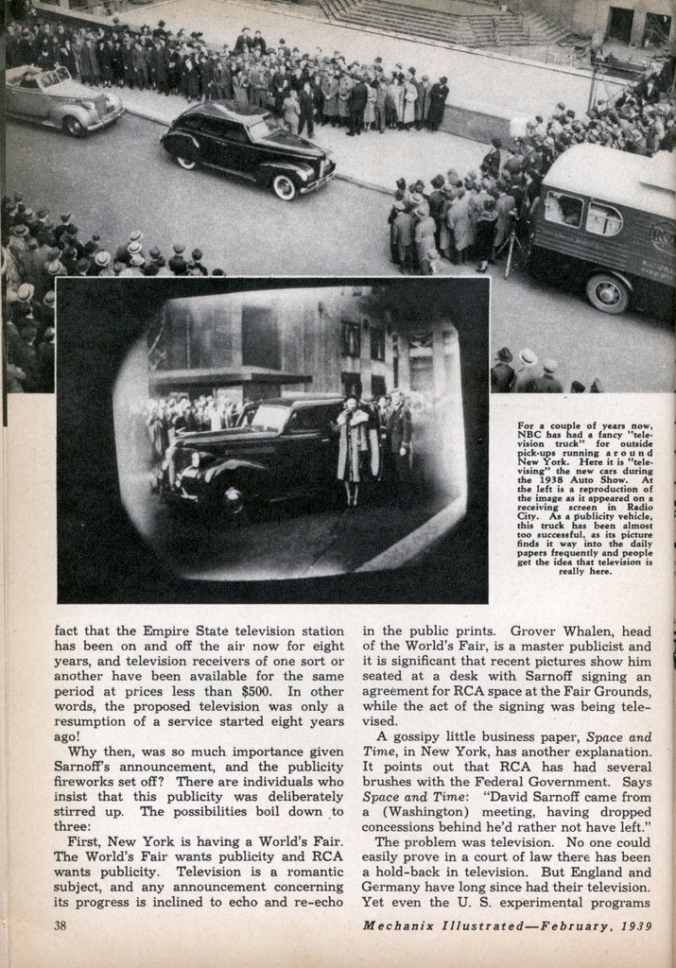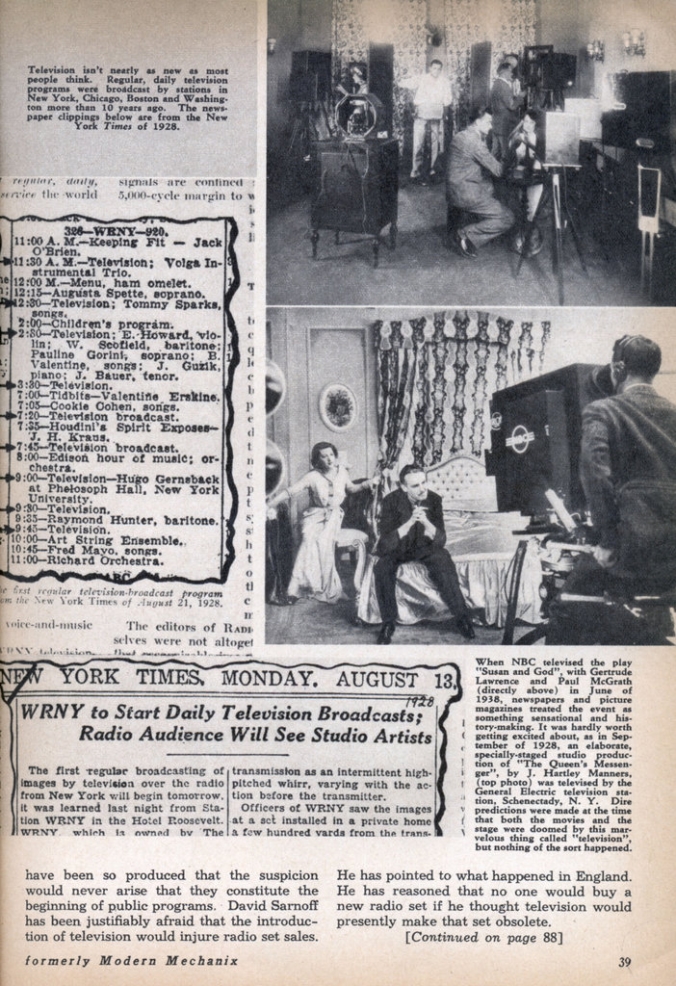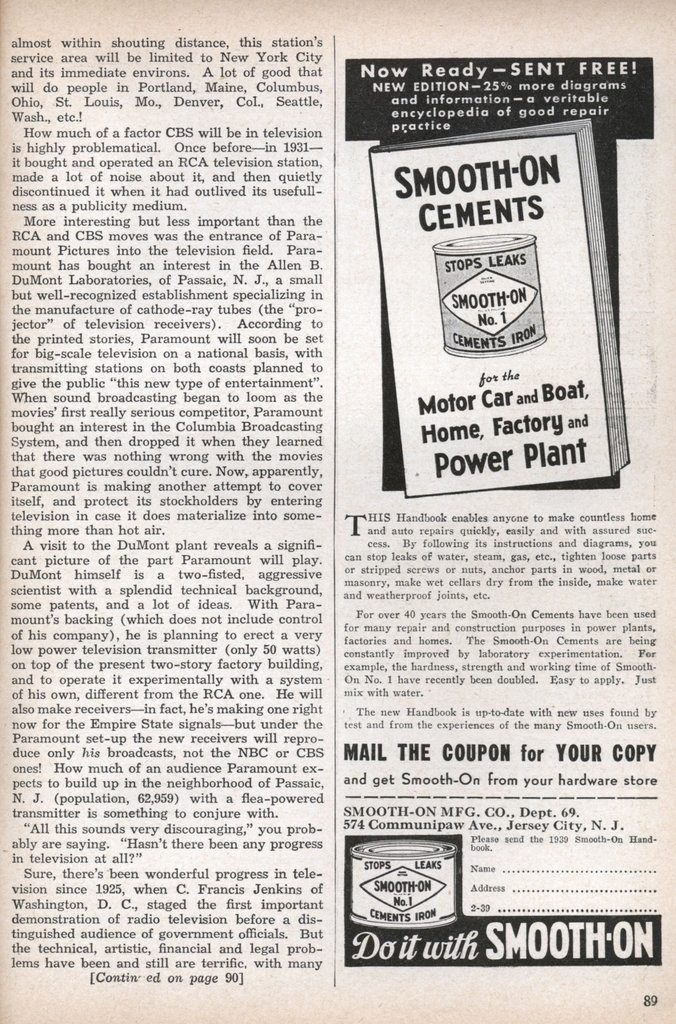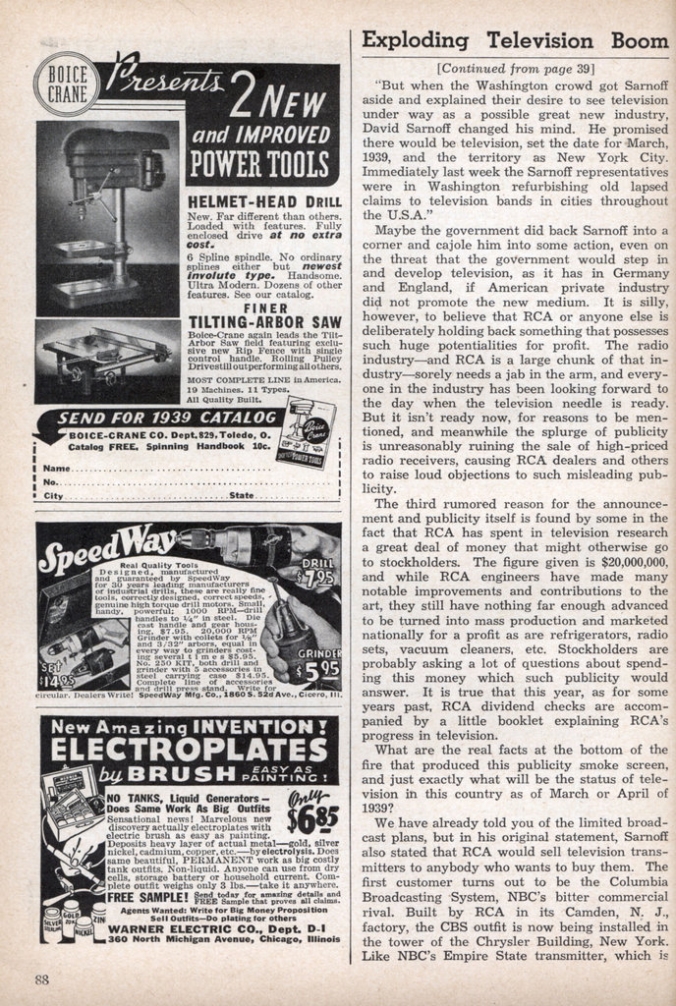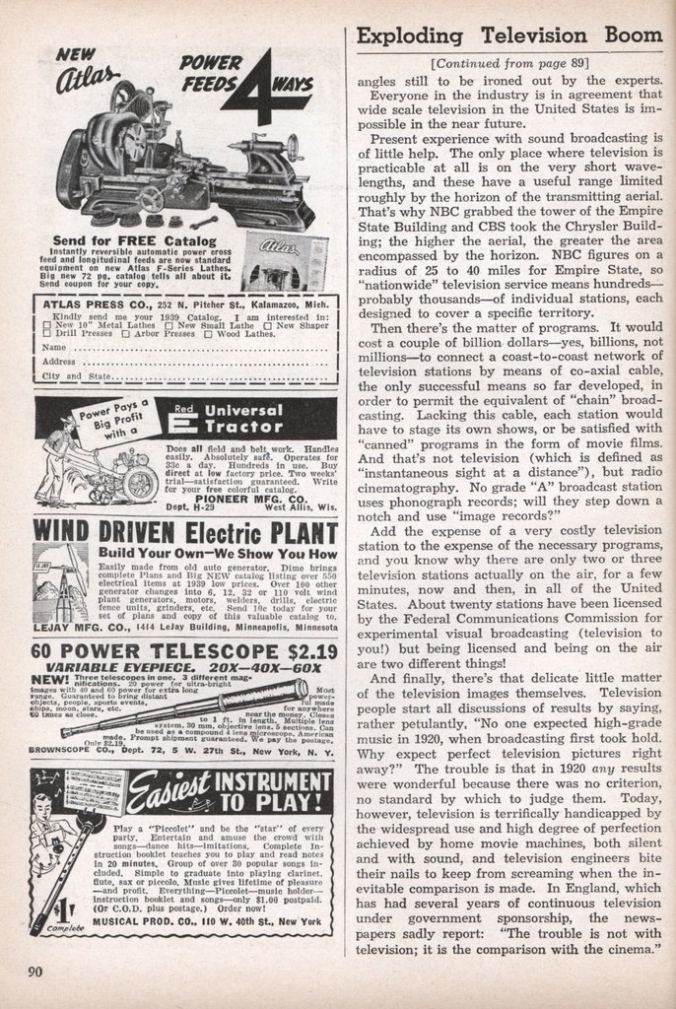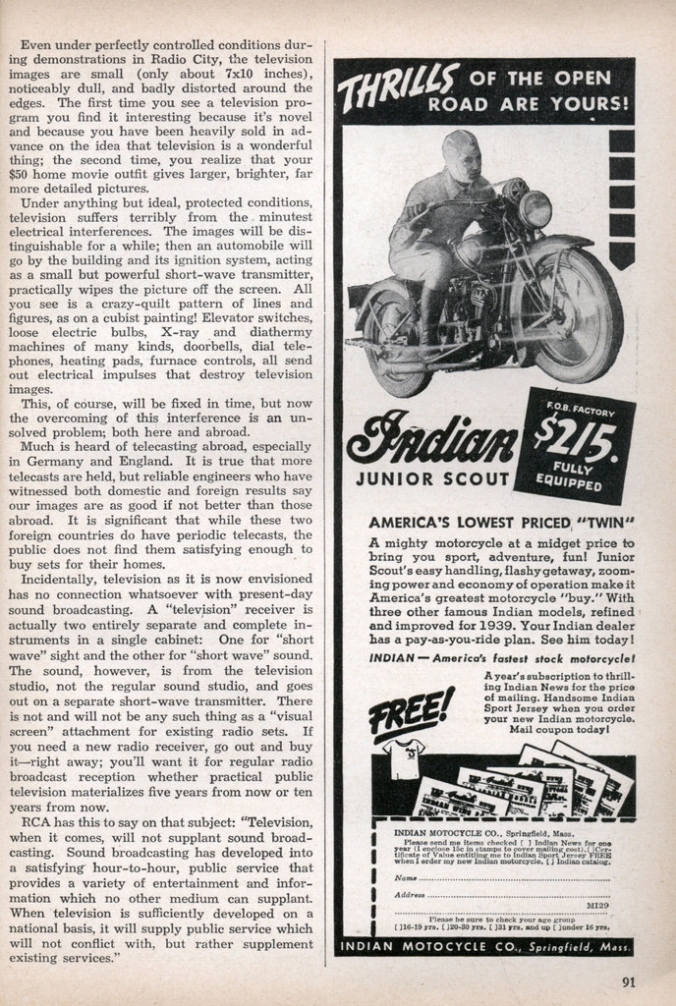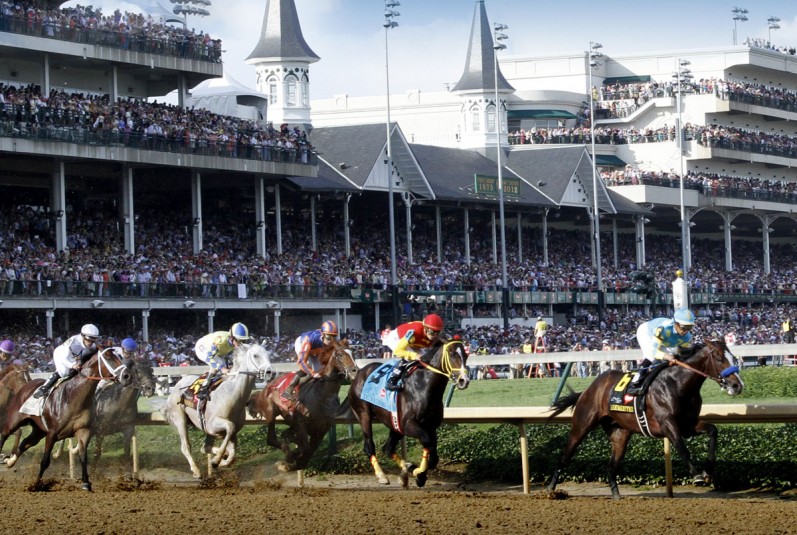

Massive Kentucky Derby Production ‘Like a Super Bowl’ for NBC Sports Group
Producing Today’s Kentucky Derby…A Mega Job For NBC
With 300 crew members, 54 cameras, 15 announcers, and half a dozen mobile units, this is a big day for NBC Sports. Here’s the story, and when race time comes, and you have your mint julep, you can toast the many making the effort to bring it to you. -Bobby Ellerbee
Massive Kentucky Derby Production ‘Like a Super Bowl’ for NBC Sports Group
Fifteen years ago, when NBC Sports took over the broadcasting rights for the first gem in horse racing’s Triple Crown, NBC’s 90-minute Kentucky Derby …


JFK, Huntley-Brinkley Interview Photos In The Oval Office
ULTRA RARE! JFK, Huntley-Brinkley Interview In The Oval Office
Above are videotape outtakes, from what would be President Kennedy’s last interview on NBC.
The date is September 9, 1963, and these rare behind the scenes photos were taken by long time NBC/WRC-TV production manager, Bill Wells, and are made available to us by his friend, Tom Buckley, and the Wells estate.
As seen in these remarkable photos, NBC reporters Chet Huntley and David Brinkley sat down with the President in the White House for an exclusive interview for their program, “The Huntley-Brinkley Report”.
Kennedy stuck to outlining the policy priorities of his first term throughout the expansive interview, particularly focusing on the conflict in Southeast Asia. But he grew reflective when Huntley asked if, three years into his presidency, he found the office of the presidency unmanageable.
Kennedy gave a strikingly thoughtful, long response assessing America’s place in the world and economic issues and political roadblocks at home – essentially summing up all the challenges facing his presidency. But Kennedy ended on a hopeful and humble note, saying that the country was really managed – not by the White House, but by its citizens.
He concluded that America was making progress and said, “I think we can really look forward to the ’60s with a great deal of hope.” Tragically, of course, Kennedy would not outlive the decade for which he had so much hope, nor the the year of 1963.
In that these images are so rare, I’m sure you have friends that you would like to share them with, so please do. If you can help identify the people shown here, that would be appreciated too. -Bobby Ellerbee
Thanks to NBC veteran audio engineer Joel Spector for identifying the black man here as the great Fred Lights, who was the Huntley-Brinkley (NY), and then Nightly News Stage Manager for everyone including Tom Brokaw, until Fred’s death in 1995. He had already been the SM on TODAY with Dave Garroway. Fred Lights was the step brother of actress and major off-Broadway producer Ellen Stewart of LaMama, ETC Theatre.

Closing a Chapter
40 Years Later….I Graduate From The University Of Georgia
Next Friday, May 13, yours truly will finally receive a Bachelor’s degree in Journalism…40 years after I left UGA. My graduate studies application is already in, and hopefully in the fall, I will begin my Masters degree work at UGA’s Grady College of Journalism.
When I left, I had already finished all my Journalism core, and needed only six more classes in my minor, Theater, to graduate.
Having started on the radio at age 16, in 1966, 2016 marks my 50th year as a professional broadcaster. I don’t know of a better way to celebrate that, than with five A’s and one B, a degree, and a great part in a top rated cartoon series.
Here is the story in the UGA’s “Red & Black”, with one correction…my belief is that if you put 51 perecent of all your passion and effort into a desire, the universe will handle the other 49 percent. -Bobby Ellerbee
Bobby Ellerbee believes that if a person puts 51 percent passion and effort into a goal, the universe will find a way to take care of the other 49 percent.
May 4, 1957…America’s First Prime Time Rock n Roll Show Debuts
May 4, 1957…America’s First Prime Time Rock n Roll Show Debuts
On this day in 1957, ABC brought radio’s top DJ, Alan Freed to television, and that made “The Big Beat”, the first nationally-televised rock ’n roll dance show. Freed’s 30 minute, Friday night show came four months before Dick Clark’s afternoon show, “American Bandstand” debuted nationally on ABC that August.
Freed’s show was a summer replacement test of sorts, and ran with the understanding, that if there were enough viewers, it would continue into the 1957-58 TV season. Early reviews in June and July were positive, and ratings for the first episodes were strong.
Freed and his show seemed to be on course for a long run…BUT…his TV show came to an abrupt end. It seems that on the episode which featured a live performance by Frankie Lymon And The Teenagers, Lymon (who had appeared with Freed in some of his films), was shown dancing with a white girl. The biracial dance scene enraged ABC’s Southern affiliates, and the network cancelled the show despite its growing popularity.
A little later, Freed struck a deal with Dumont’s WABD to televise “The Big Beat” show again locally. Even as WABD became WNEW, the show continued, until the Payola charges started, not only flying, but landing on Freed. -Bobby Ellerbee
May 4, 1961…Network TV Preps For First US Manned Space Shot
May 4, 1961…Network TV Preps For First US Manned Space Shot
The next day, on May 5, Alan Shepard became the first American to enter space, but long before that, the networks had flocked to Cape Canaveral with their standard remote equipment, a load of telephoto lenses, and some imagination.
This may be the first use of this wonderful counterbalanced arm system from CBS. This is a Houston Fearless cradle head with the wheel track, pan head base removed, which limited the tilt up. By drilling a hole at the center of balance of the cradle, a cross member support was installed, and an adjustable lead weighted arm was attached underneath. It looks like the wheel track base is being used to secure the rig to the tripod, via it’s Mitchell mounting nut, but is installed sideways, which would allow the cameraman to lock the swivel or pan. Very clever.
I think by the next launch, everyone was using this system, which CBS gladly shared. Notice there is even a periscope made into the custom viewfinder. Enjoy and share! -Bobby Ellerbee
May 3, 1948…CBS Debuts TV’s First, Live, Nightly Network News
May 3, 1948…CBS Debuts TV’s First, Live, Nightly Network News
On this day in 1948, “CBS TV News” became network television’s first daily newscast, with a live newsman…Douglas Edwards.
NBC actually had the first daily network news broadcast, which began February 16, 1948. That was the “The NBC Television Newsreel” (later named “Esso Newsreel” and “Camel Newsreel”), which was a 10 minute weekday newsreel, and was narrated off camera by John Cameron Swayze. On February 16, 1949, Swayze moved in front of the camera, and that began “The News Caravan” as a live news show. By the summer of ’49, Camel had become the sponsor and the name changed to “Camel News Caravan”.
To go a bit further in just what the first network new broadcast was, we go again to NBC. Their Sunday afternoon, “The War As It Happens” began as a local weekly program, but NBC records indicate that in April of 1944, it was fed to Schenectady and Philadelphia on the fledgling NBC Television Network, and became the first news cast regularly seen in multiple cities. In August 1945, the war was over and the Sunday “The War As It Happens” newscast was renamed “The NBC Television Newsreel”.
Edwards joined CBS Radio in 1942, eventually becoming anchor for the network’s regular evening newscast “The World Today” as well as “World News Today” on Sunday afternoons. He came to CBS after stints as a radio newscaster and announcer at WSB in Atlanta, Georgia and WXYZ in Detroit, Michigan.
Although Lowell Thomas, on NBC, and Richard Hubble on CBS had done live TV news shows locally in New York in the late ’30s and early ’40s, Edwards was the first network anchor.
After the war, CBS began telecasting news shows locally on Saturday nights, expanding to two nights a week in 1947. These reports were delivered by CBS radio news men, who were not really interested in this “television stuff” and loathed having to do it. Edwards had a couple of turns at it, and kind of enjoyed it and let his interest be known.
On May 3, 1948, Douglas Edwards began anchoring the “CBS Television News”, a regular 15-minute nightly newscast, airing every weeknight at 7:30 p.m. Eastern Time, and this was the first regularly scheduled, network television news program to use an anchor.
On CBS, the week’s news stories were recapped on a Sunday night TV program titled “Newsweek in Review”. The name was later changed to “The Week in Review”, and the show was moved to Saturdays. In 1950, the name of the nightly newscast was changed to “Douglas Edwards With the News”, and the following year, it became the first news program to be broadcast on both coasts, thanks to a new coaxial cable connection, prompting Edwards to use the greeting “Good evening everyone, coast to coast.”
Once the coast-to-coast connection was available, it is not clear whether both Douglas, and Swayze did a live second broadcast for the west coast, or whether it was kinescoped. There are stories that report the show was done live again, with added west coast content, and reports that say it was kine delayed, but one thing is clear…November 30, 1956, Edwards’ program became the first to use the new technology of videotape to time delay the broadcast.
Early on, NBC’s news took the lead, but by the mid 50s, CBS and Edwards were in the lead. In September 1955, “Douglas Edwards With The News” was moved from 7:30 to 6:45 p.m. ET.
On October 29, 1956, Swayze was replaced by Chet Huntley and David Brinkley and NBC’s “Huntley-Brinkley Report”. The switch helped CBS ratings as it took a while for Chet and David to gain traction. By the early ’60s, NBC’s news ratings were a good bit higher, and a decision was made to make a switch at CBS.
Walter Cronkite became anchor on April 16, 1962. On September 2, 1963, “The CBS Evening News” became network television’s first half-hour weeknight news broadcast, lengthened from its original 15 minutes, and telecast at 6:30 p.m. ET. NBC quickly followed suit and “The Huntley-Brinkley Report” expanded to 30 minutes exactly a week later on September 9, 1963. ABC followed 4 years later.
“The CBS Evening News” was broadcast in color for one evening on August 19, 1965, and made the switch permanently on January 31, 1966.
Just this week, a big change to the weekend edition of “CBS Evening News”, was announced, and that story is in today’s second post, so look for it, or better yet, visit this page by clicking on the blue EOAG address at the top of this post. Enjoy and share. -Bobby Ellerbee
May 2, 1941…Commercial Television Becomes A Reality…ALMOST
May 2, 1941…Commercial Television Becomes A Reality…ALMOST
On this day in 1941, the FCC set the stage for commercial television to begin, when it agreed to grant 10 stations commercial TV licenses effective July 1, 1941, which called for those stations to broadcast 15 hours per week. W2XBS (WNBT) received license number one, and W2XAB (WCBW) received license number 2. Although Dumont was on the air in NYC, it remained experimental station W2XYV until May 2, 1944, a full three years later, due to a war related licensing freeze.
It was only on March 8, 1941, that NTSC formally recommended the new broadcast standards to the FCC, calling for 525 lines and 30 frames per second. On Apr. 30, 1941, the FCC approved the NTSC standards and authorized commercial TV to begin on July 1. -Bobby Ellerbee
1929: Radio Movies in Color
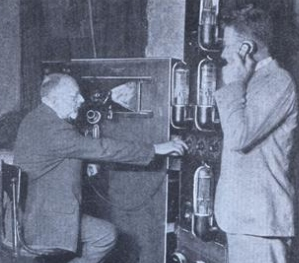
One of the leaders of Bell Labs had an idea of how to show the black and white movies of those days in color. This idea seems to be a lot like what we finally got in electronic color TV, with the use of mirrors and color filters.
1930: Television Gives Radio Eyes and Ears

Discussions of 1929 TV milestones like ‘color over a wire’ and other events are described, but TV had yet to prove its broadcast potential and the closed circuit possibilities are discussed here. In their wildest dreams, they never envisioned what TV has become.
1932: David Sarnoff on “Where Television Stands Today”
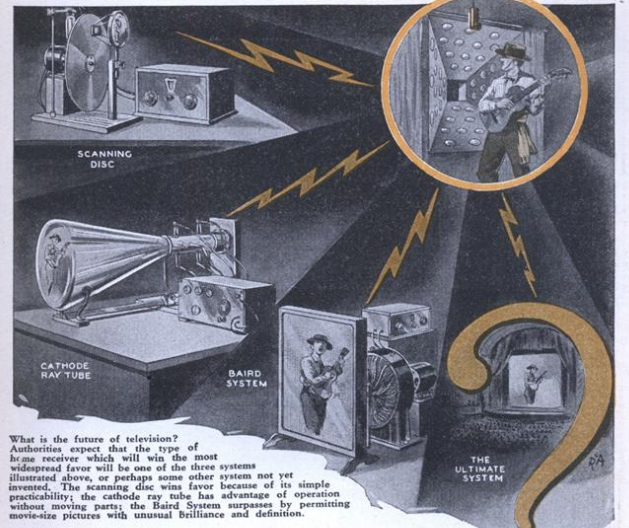 “Where Television Stands Today” is an 8-page article written for Modern Mechanics by one of the most important names, and true pioneers, of broadcasting. It’s a very interesting read.
“Where Television Stands Today” is an 8-page article written for Modern Mechanics by one of the most important names, and true pioneers, of broadcasting. It’s a very interesting read.
1932: First American Cathode Ray Televisor
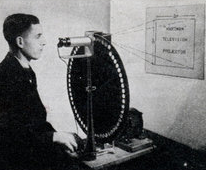
From Everyday Science and Mechanics, a few quick notes on the state of mechanical and electronic television progress, including the lens drum and diagrams of European sets.
1933, Where Television Stands Today
Suffice it to say that TV has come a long way, but this 4 page article from Modern Mechanics published in October of 1933 is quite interesting.
1936: First Philo T. Farnsworth Interview
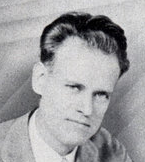
The true father of television as we know it shares his thoughts on the new medium’s future. This may be one of the earliest interviews with him, but even if it’s not, it’s interesting to see his thoughts in the context of the times in which he lived. Remember, the Great Depression was in full force in ’36.
1937: The Truth About Television
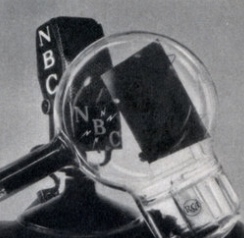
Now this is interesting! Here is a Modern Mechanix article from November 1937 that is complaining about TV. Not the abundance, but the lack! London had 5,000 sets in use while there were only 150 in New York. A lot of finger-pointing about why…leads us back to $$$. Yes, patents were an issue and no one wanted to get to ‘exposed’ before they were sure they had rights to their discoveries.
1938: Early Television Makeup
Here are two very interesting articles with great pictures to show what it took to make people look ‘normal’ in the early years. Wow!
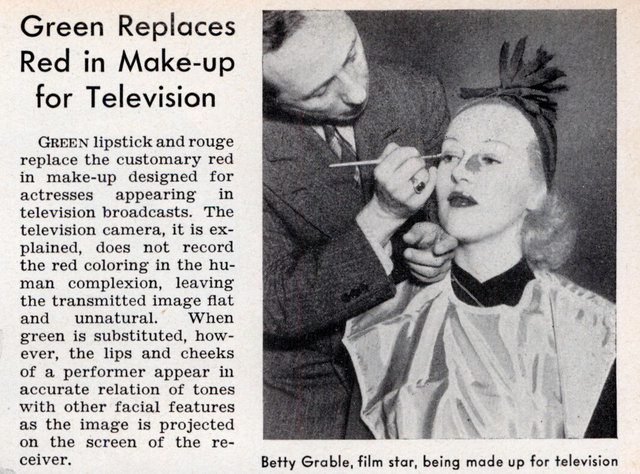
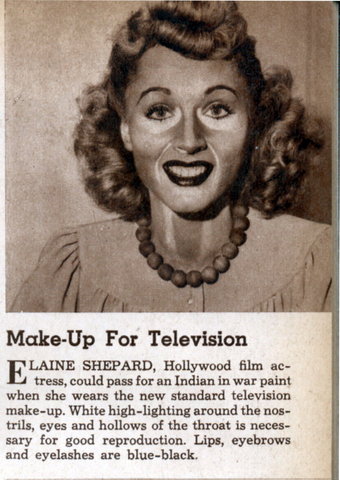
1938: Where Is Television Now?
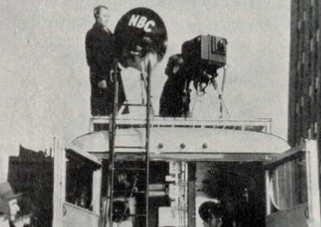
Engineering types will love this great discussion on transmission techniques. Coaxial, long wave and more is discussed here in depth in a very good article. Also, the problems from lack of standards is talked about at length.
1939: New York TV Set Receives London Signal
When I first saw this, I was very curious how this could possibly happen with no coaxial cables or repeaters. The answer is in another article on this page: “1938, Where is TV Now?” The short answer is long-wave transmission, but read the other article for the inside scoop.
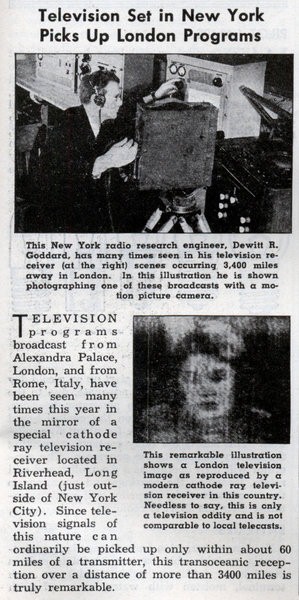
1939: Exploding the Television Boom
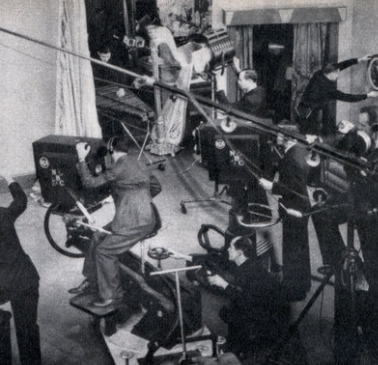
Wow! This nine-page article from Mechanix Illustrated is full of pictures, but the story is the biggie. TV had a lot of problems getting off the ground and a lot of those are laid out here. Sarnoff is being pushed by the government, costs of development are explored, problems with linking the coasts, and a lot more are laid out here – as well as the first daily broadcast schedules.
